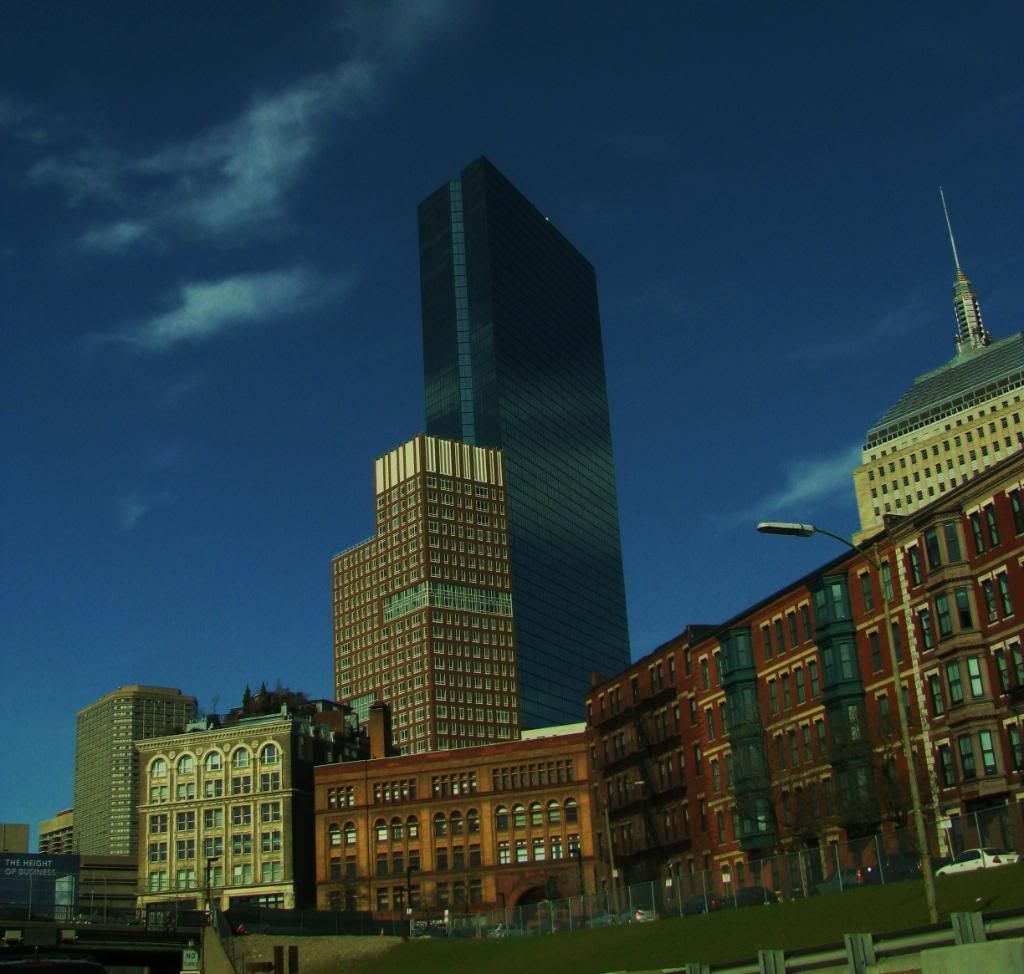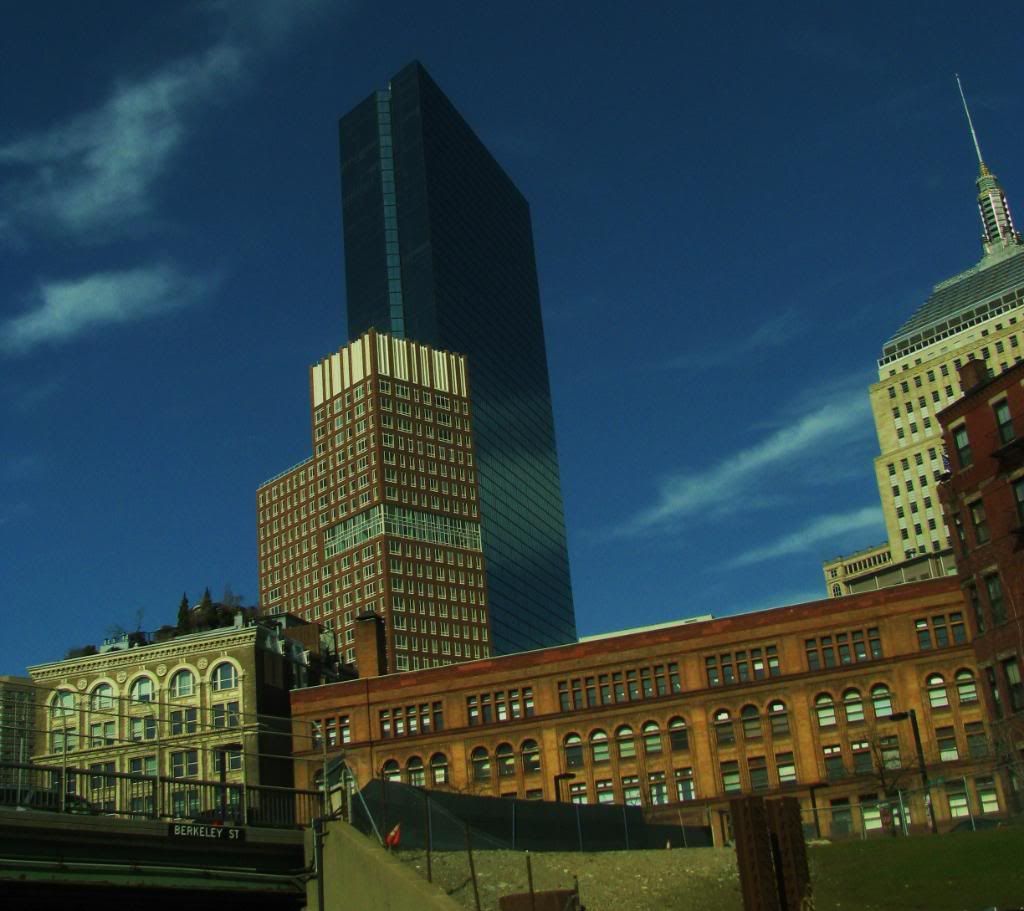Cones sit next to mangled fence sections on the cordoned-off strip of land between Cortes Street and the Massachusetts Turnpike. Tree stumps line the sidewalk where 24 mature trees were removed years before. Signs instruct visitors to wear safety protection. After more than a decade, the big project that couldn?t now sits doomed.
The corner of Cortes Street and East Berkeley Street is just one of the five parcels of land that would have been a footprint of the Columbus Center, now owned by developer California Public Employees? Retirement System (CalPERS).
Back in 1997, Boston-based WinnCompanies won designation rights to add a 35-floor skyscraper, a parking garage, luxury condominiums and other mid-rise buildings to the South End and Back Bay community. In the 13 years since, money problems and community outrage have wrought continuing controversy around the site, which eventually passed into the hands of CalPERS.
But, in a move that brought about the beginning of the end of the Columbus Center, the Massachusetts Department of Transportation (MassDOT) officially terminated the developer?s lease last week. MassDOT told Columbus Center developers last month that they were in default of their 99-year lease of the property for a number of violations, including failing to complete proposed building projects on time and maintain the construction sites to Department of Transportation standards, and gave them one month to come up with a viable business plan. No plan was hashed out.
Third Suffolk State Representative Aaron Michlewitz, who has seen the project wither away during his time as an aide to former speaker Sal DiMasi and since taking over his former boss?s post last summer, expressed his relief that a decision had finally been made.
"The community was put in limbo for quite some time and while there is still a long process ahead, I think it is a welcome end to the uncertainty that has been surrounding the project from day one," he said.
The long process Michlewitz alluded to concerns the project?s clean up. Apart from the trash and fences surrounding the properties, electrical cables, cement road barriers, cones, an electrical station, and construction vehicles must be removed.
"We need to see the site restored to as close to the original shape, as close as possible," said Michlewitz.
The problem facing MassDOT and developers now is who pays for the clean-up costs. Adam Hurtubise, a spokesperson for MassDOT, said his organization and CalPERS are continuing ongoing talks.
"We received a letter back from them and we are going to discuss their letter with them. In the meantime we do expect the developers to pay for clean-up costs at the Columbus Center site," he said, estimating that costs could total up to $5 million.
Spokesperson Steve Sugerman of Stockbridge Real Estate Funds, a partner of CalPERS that has taken up the negotiations, said no decision had been made concerning clean-up costs or responsibility.
"We are continuing to seek a productive working relationship with MassDOT and the City of Boston to amicably close the site down," he said, echoing the statement his company provided days before.
The developers? most recent letter to MassDOT explains that the developers are willing to pay $1.5-2.0 million dollars "in exchange for which the parties to the Leases [will] each release one another from all claims under the Leases or relating to the project."
The letter states that the "primary stumbling block to resolution of this matter has been the Landlord?s desire to collect more."
"The Tenants have proposed to pay all of their remaining net assets to the Landlord, which is all the Landlord could recover if it were to prevail in litigation against the Tenants ... please bear in mind that in addition to the enormous time and effort they have invested in this failed project, the Tenants have already lost in excess of $125 million on this project. Moreover, MassDOT and the City have already received millions of dollars in benefits from the Tenants including $3 million in rent, the $2.3 million Austin Rounds parcel, and the $1.6 million in funding for Frieda Garcia Park," the letter continues.
The letter also expresses the developers? hope that litigation will not occur: "The Tenants believe that litigation will benefit no one, and that a settlement consistent with the Leases is the only sensible outcome."
As CalPERS, Stockbridge, and MassDOT try to find middle ground on the issue, residents remain waiting. Several community members who live around the site, who all declined to give their names, varied in attitude toward what should happen now.
One Cortes Street resident, who had only recently heard of the project, gestured to the construction site and grimaced.
"Well, I?d rather them not leave it like this," she said.
Another resident, who has lived in a Cortes Street basement apartment for 43 years, said that the trees should be replanted or that crews should "at least take the stumps out of the way."
An Appleton Street resident, whose window views would have been blocked by the Columbus Center construction, was relieved that the project had been "kiboshed."
"Frankly, I?m glad that whatever it is, it?s not just another high rise. ... It?s exhilarating when you travel down Clarendon and you see a city, but I like the squirrels and the birds and the trees," she said.
She hoped that the bad economy and decrease in condo purchasing would keep large developments in her backyard at a minimum.
But Clarendon Street resident Ned Flaherty, an urban planning activist who has followed the construction-or lack thereof-since its inception, said he wouldn?t mind a large construction project, as long as it followed the "master plan" guidelines provided in the Turnpike Air Rights Civic Vision written in 2000.
This "master plan" concerned several aspects of the 23 parcels of land subject to "air rights" above the city?s section of the turnpike-from the community process that development should follow to the specific buildings each parcel could hold. But Flaherty believes that even this plan-specifically the citizen advisory committees it discussed-needs to be tweaked.
"In 1997, the mayor agreed that every citizen advisory committee would have most of its seats owned by the developer and the construction industry ... so the developer always won. [The members nominated by the community] didn?t have a chance," he said. "It doesn?t do any good that you have a master plan if the review committee is going to violate it every time they take a vote."
Going forward, Flaherty still hopes that the last 13 years of difficulty will end well.
"I care deeply about the community and I hope for a good outcome," he said.


